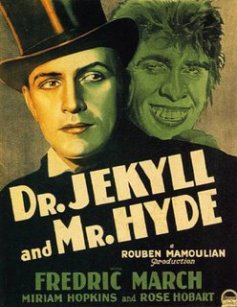Author Archive
Final comments!
Posted on: March 28, 2012
Hi 🙂 These are the comments for this week…
http://jessywessywoooo.wordpress.com/2012/03/21/cosmetic-neurology-every-students-dream/#comment-39
http://psud6e.wordpress.com/2012/03/25/statistics-in-journalism/#comment-89
Multiple personality disorder now called Dissociative identity disorder (DID) is characterised by the presence of 2 or more personalities which regularly take control of an individual’s behaviour. Each personality is completely separate and distinct from the next, they can differ in age and gender and speak with different gestures, voices and mannerisms. DID is an extremely complex disorder thought to manifest due to a traumatic experience causing the repression of memories. The dissociative part is believed to be a coping mechanism, an individual with DID will disassociate with that memory in their conscious mind. This coping mechanism is a method the brain uses to protect itself from harmful and distressing memories, repressed memories never disappear but if they are pushed so far into the subconscious then they may come out in dysfunctional behaviours or other subconscious means.
Through research for this blog I came across a case of an American woman Gretchen who had been diagnosed with DID. DID had a huge effect on her life. When she was in distress as Gretchen she would switch to a personality that was emotionally stronger. She had another aggressive personality which would come out and be very critical of Gretchen, through this personality she would self-harm and be completely unaware of what had happened when she came back to herself (Gretchen) again. She began to write things down (each personality had their own handwriting style) as she would lose hours or sometimes a whole day when she was in a different personality, writing things down enabled her to catch up with what she had done whilst under the influence of her other personality.
A further case detailed a police officer John. An interesting point was made here about the ability of his dog to sense his change in personality. John had trained his dog to stay out of the living room. As soon as his personality changed whilst in the living room his dog would enter knowing that his ‘master’ was no longer present. As soon as John came back, his dog would leave the room as he had been trained to do.
A case study design is ideal for unusual clinical cases such as DID. Statistics show DID occurs in around 0.01-1% of the general population which means there is very little literature on the subject compared to other Axis I and II disorders (Ross, 2006). It is an extremely rare disorder according to the statistics but it has been frequently portrayed in popular culture. Sybil (1976) was based loosely on the life of Shirley Ardell Mason, a woman with 16 different personalities. Norman Bates’ character in Psycho (1960) had a dual personality as did the narrator in Fight Club (1999). The disorder is also depicted in the Robert Louis Stevenson novel The Strange Case of Dr Jekyll and Mr Hyde, a story of a lawyer with split personalities, one good and one evil.
Due to its rarity case studies show their strengths well when studying individuals this way. The majority of what we know about DID is down to case studies and the detailed and in-depth knowledge they can bring. Their focus on the individual rather than the ‘generalisable’ population allows for variables that may have been overlooked in an experiment to be uncovered. Case studies are often criticised for their lack of generalisability, selective bias and subjective interpretation but used in the right setting they are a very valuable method of research.
Ref:
Ross (2006) http://www.springerlink.com/content/q372704220t8642t/
Comments for Semester 2, Week 8!
Posted on: March 13, 2012
Hi, links for the comments for this week 🙂
http://psuc48.wordpress.com/2012/03/11/fed-up-of-being-skint/#comment-36
http://arbe91.wordpress.com/2012/03/11/can-causation-be-assumed-using-correaltion/#comment-53
http://psud6e.wordpress.com/2012/03/10/what-is-average/#comment-69
http://ellies1mpson.wordpress.com/2012/03/11/218/#comment-70
In the Psychology world communication between groups in an independent measures design can be something of a disaster. It can cause diffusion, whereby the act of someone from one treatment condition talking to someone in the conflicting condition can cause treatment effects to spread across groups as those learning of the different treatment may start to filter in a bit of what they’ve found out. This can make any possible difference in treatments decrease.
Compensatory equalization can occur. If in a research study a treatment group was administered a new drug for depression and the control group was given no intervention at all then the control group (upon finding out) may demand that they receive the same treatment as the experimental condition. If researchers choose to meet this demand then they have eliminated their control group and are left without a comparison for the remainder of the study.
Communication between groups can also affect performance both positively and negatively. It can cause compensatory rivalry whereby the control group increases their efforts in retaliation so results are unnaturally high therefore showing little difference between groups. It can also go the opposite way and cause resentful demoralization where the control group will in effect give up and intentionally decrease their participant effort due to resentment of the experimental groups receiving special treatment causing control results to fall lower than expected and allowing a possible Type 1 error to occur. Schwartz et al. (2001) conducted research into effects of exercise on fatigue for patients undergoing chemotherapy. They specifically chose a one-group design with no control to avoid potential compensatory equalization effects and resentful demoralization.
Communication between groups can have very serious effects in real world scenarios. To prevent bias in a trial the jury is on rare occasions ordered to be sequestered to allow for an objective decision, this is the total isolation of a jury. In the case of the George Huguely V murder trial (George Huguely was found guilty of the 2nd degree murder of Yeardley Love on February 22nd 2012 and sentenced to 26 years) great precautions were taken to pick a jury. Huguely’s lawyers requested a sequestered jury but the judge chose to pick a jury that swore under oath they had done all they could to shield themselves from the vast amount of media coverage the case had created. The murder of Yeardley Love has received huge attention by the media and many thought it impossible to find a single juror that wasn’t aware of the case. In the end the 12 jurors picked had all heard of the case and they were carefully selected as individuals who did not possess any fixed prejudicial notions.
http://www.cltv.com/topic/bs-md-huguely-jury-20120220,0,13726.story
Hi , these are the comments for this week, thank you 🙂
http://psuc3c.wordpress.com/2012/02/19/should-psychologists-learn-statistics/#comment-9
http://uzumakiabby.wordpress.com/2012/02/17/self-report-measures-tell-me-about-yourself/#comment-63
Correlation is quite simply a statistical value that can tell us the direction (positive or negative) and strength (weak or strong) of the relationship between 2 variables (A & B). If the 1st variable increases along with the 2nd variable, this is a positive correlation and if this goes the opposite way and values decrease together this is a negative correlation. But just because 2 events are occurring together at the same time does not mean we can assume causation.
Positive Correlation
Negative Correalation
No Correlation
Causation is able to determine cause and effect. It is able to say A causes B without any doubt. It is very common for statistics to be misused in this way by reporting a correlation as a causality. Aspartame is an artificial sweetener prevalent in all diet carbonated drinks and has been approved for consumption by over 90 countries worldwide. However over the years it has frequently been connected with numerous serious health effects. In 1996 a study released findings showing an increase in the incidence of brain tumours had coincided with the introduction of aspartame into the US between 1975 and 1992, sparking a health scare that aspartame was the cause of this sudden increase. However a further study into this found the incidence of brain tumours had been increasing since 1973, 8 years before aspartame had been approved for consumption. A multitude of studies thereafter have found no link with aspartame and cancer. This is a clear example of correlation being mistaken for causality.
Of course it is easy to see why misreporting occurs, this sort of thing will sell newspapers so is very common. But it does an injustice to the truth if we are continually bombarded with false stories making the truthful ones hard to believe. A certain level of responsibility is important to avoid unnecessary health scares by ensuring newspapers state a study shows a correlation but not a definite cause.
http://www.cancer.gov/cancertopics/factsheet/Risk/artificial-sweeteners
Hi 🙂 the comments for this week, thank you!
http://uzumakiabby.wordpress.com/2012/01/31/blog-about-blogs-literally/#comment-51
Statistics could save your life!
Posted on: February 5, 2012
On December 20th 1995, American Airlines Flight 965 taking off from Miami, Florida crashed en route to Cali, Columbia just short of its destination into the Andes. Of 163 passengers and crew onboard, 4 survived the impact. Mercedes Johnson was one of the survivors on that day, sitting over the wing and near an exit, she believes where she sat played a part in how she survived, the wing area of the plane is the most reinforced with metal. But is there a safest place to sit on a plane, statistics wise?
A study carried out by Greenwich University and commissioned by the Civil Aviation Authority analysed 105 accidents and drew conclusions that where you sit can play a role in the outcome of a crash. Those in aisle seats, sitting 5 or less rows from an exit and those near the front of the plane had higher chances of survival. Statistically they found the worse places to sit are seats at the back of the aircraft and seats six or more rows from an exit. Proximity to an exit seems to be the most important factor in improving survival chances, the closer the better. However counter to this Popular Mechanics magazine in 2007 looked at all available seat survival data from crashes dating from 1971 onwards and found that those seated behind the wing, towards the rear had a higher survival chance at 69%, compared to over the wing at 56% and even less if you were seated at the front at 49%.
Adopting the brace position, keeping your upper torso as low as possible, to avoid a jack-knife effect on impact and tightening your seatbelt as much as possible to reduce the potential G-force on collision are all points to note.
A positive attitude in a survival situation can have a big impact too. It can reverse the toll of stress and allow you to make more clearly thought out decisions. Something known as “negative panic”, whereby an individual doesn’t act when at risk has been found to occur in a situation such as a plane crash. When the mind encounters an entirely new scenario in this case a plane crash it tries to connect this with past related information. If there is no such previous experience then the mind enters into a cycle of passivity hence the lack of action and inability to come to terms with what is happening.
On a final note it is still important to remember that over 90% of plane crashes have survivors and it’s not all down to fate, there are many things you can do to improve your chances!
http://www.scribd.com/doc/52788006/Artemis-Q1-2011-Is-Volatility-Broken
http://news.bbc.co.uk/1/hi/magazine/5402342.stm
http://adventure.howstuffworks.com/survival/wilderness/survival-psychology1.htm
“Must the need for documented ethics procedures hinder research progress?”
Posted on: December 8, 2011
Ethics are the laws which govern what is morally right and wrong. Ethics were introduced into Psychological research in 1947 by the APA due to a demand to set professional standards for a growing science and research discipline after the success of WWII psychological tests on potential army recruits.
The code of ethics for which Psychologists adhere too are principles which are common sense and a code that the majority of people live by. Straight off the bat it would seem obvious to most that Milgram’s 1961 Obedience to Authority study raised questionable ethical implications. Participants took a role of “teacher” and were told to administer an electric shock every time the “learner” who was in fact in on the study answered incorrectly. Sixty-five percent of participants carried on till the end to inflict 450 volts on the “learner” despite signs of extreme pain. Many “teachers” displayed signs of great distress at continuing with the experiment, resistance was responded with encouragement to proceed. To put an individual through a traumatic incident such as this would raise question marks over the moral character of such a person. Did they think it was okay to trick people in this way? Were they not concerned with lasting effects on participants? It would appear they weren’t. They may have seen it as the collateral damage to gaining an insight into the mind of a conforming human.
Such severe research no longer takes place. My first thought is thank goodness but has this now hindered the progress of research? Whilst the findings of Milgram’s study are certainly interesting, I believe the hinderance to be justified. If there is no other way of researching an area without harming a participant then I think I would rather not know the answer, is it really that important that you can rationalize such a cost?
http://www.sagepub.com/upm-data/3517_Fisher_Chp1.pdf
http://psycnet.apa.org/?&fa=main.doiLanding&doi=10.1037/h0040525
Homework for my TA Weeks 8/9
Posted on: November 24, 2011
Links for the comments this week…. 🙂
http://samanthakirby.wordpress.com/2011/11/23/ethics/#comment-41





